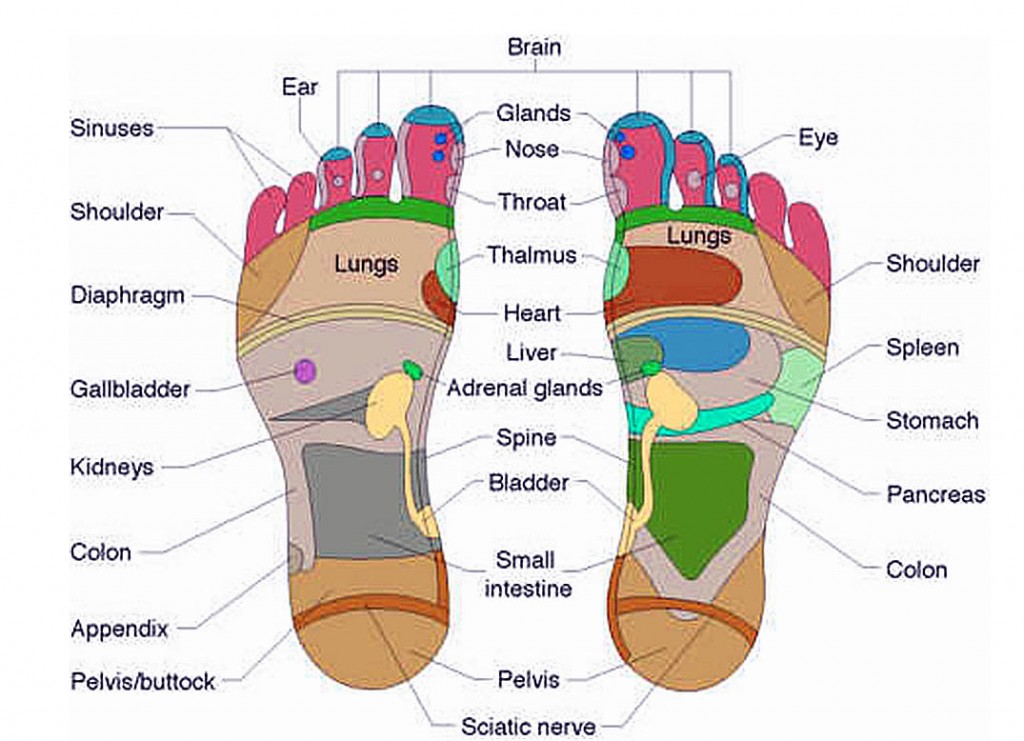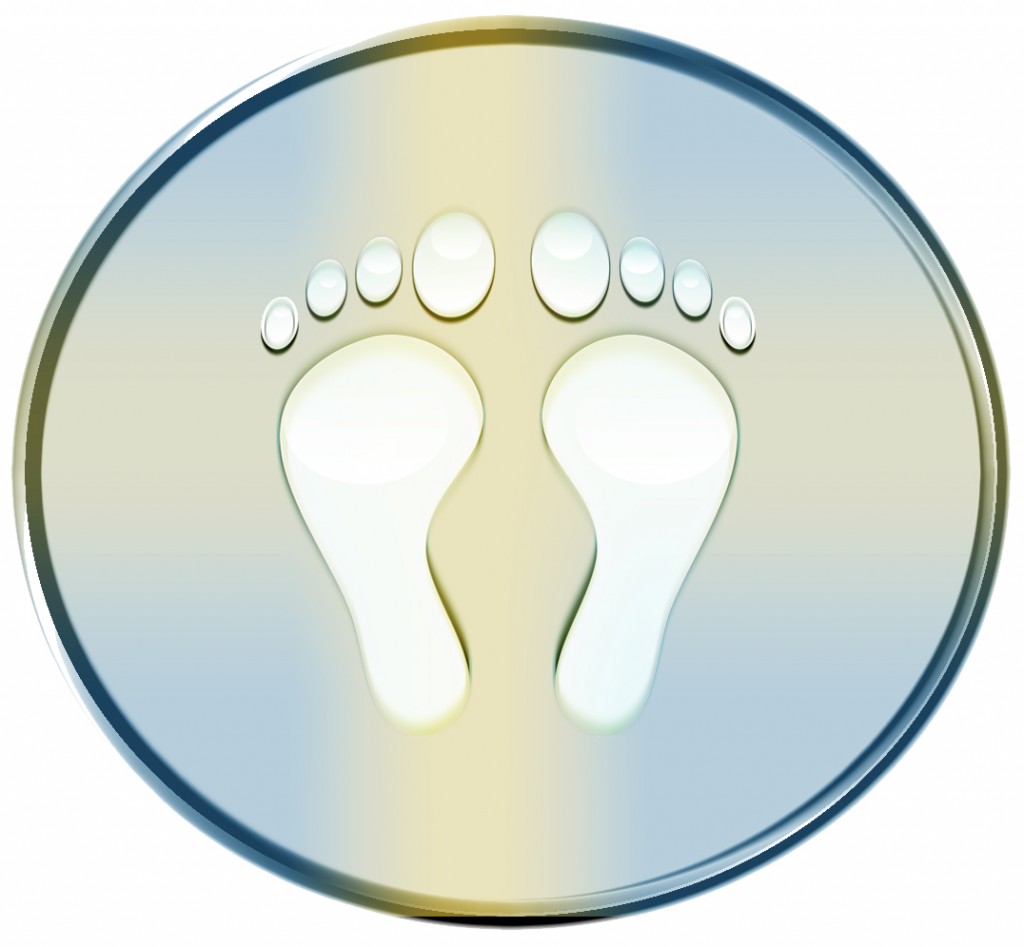Acu Flex Zone
Much more than an ordinary footmassage
Acu Flex Zone Reflexology is a unique new feature from IQue which gives a wonderful experience in Acupuncture and Zone massage.
The spa water is heated up to +39C, which in combination with small but powerful jet beams delivers a very comfortable and extremely healthy treatment. The powerful jet beams access specific acupuncture areas that influence various areas of the body very positively.
The water jets can be incrementally controlled via a valve. This is a revolutionary feature in our hot tubs and is found only in IQue hot tubs. Take a look at the information on this page to learn more about reflexology and how its benefits can assist you lead a healthy lifestyle.
The Theory of Reflexology
The theory underlying reflexology is that the organs, nerves, glands and other parts of the body are connected to reflex areas or reflex points on the feet and hands.
These areas are found on the soles of the feet and palms of the hands, as well as on the top and sides of the feet and hands.
By stimulating these areas using a compression technique and a form of massage with your thumbs, fingers and hands, you can create a direct response in a related body area. For example, by working on the head reflex (which is found on the big towel, you can activate the body’s own healing processes to help alleviate headaches.
The right foot and hand represent the right side of the body, while the left foot and hand represent the left side; and according to ‘zone therapy’, there are ten different zones in the body.
The feet are most commonly worked on in reflexology, because practitioners feel they are normally more responsive to treatment than the hands, since they contain a larger treatment area and so the reflex points are easier to identify; and because the feet are usually protected by shoes and socks, they are more sensitive to treatment. However, the hands can be used for treatments just as effectively and are great to work on, especially when giving yourself reflexology.
Reflexology can help increase the circulation, thereby preventing a sluggish blood flow that could result in clotting. The relaxation aspect of reflexology treatment can help to prevent high blood pressure, angina, heart attacks and strokes.
Reflexology and Energy
As you know, the systems of all life are governed by electromagnetic fields and the human body transmits and receives energy. Reflexology is based on the positive energies that zone therapy frees up in the body. The fact that we cannot see these energies does not mean that they do not exist and flow within our bodies.
For instance, many people appreciate the effect of positive energy when holding a child or a loved person. On the other hand, electromagnetic fields from mobile phones and computer screens can have a detrimental effect on your health.
It is also important to understand the effects of negative energy on the well being of our body. Free-flowing energy pathways run through the body, creating homeostasis, which is the body’s natural state of balance. Areas of the body might not function well or become diseased due to blockages in energy. What you expose your body to, put into it and on it can affect your health and becoming healthy is a matter of balancing a number of factors in your life. Reflexology can do that.
Aspects of Reflexology
Reflexology is often compared with acupuncture, the ancient Chinese alternative medicine methodology that treats patients by manipulating thin, solid needles that have been inserted into special acupuncture points in the skin. For instance many patients that fear needles employ reflexology as alternative treatment method.
As a matter of fact, reflexology is a lot more pleasant than acupuncture, simpler and can be performed by the patient after learning the basics.
If we were to make a comparison, the relation between acupuncture and reflexology resembles with the relation between agriculture and gardening.
Reflexology is based on the concept that organs and body functions have several projections in different parts of the body.
It uses the general concept that the micro universe reflects the macro universe. Knowing these projections, the reflexology specialist ‘works’ them in a benefic way. He does that by applying dosed pressure.
Reflexology is recommended as therapy in affections caused by toxin accumulation in the body. The method helps by eliminating those toxins. Reflexology is mostly used in the treatment of hepatic and digestive diseases, but also in metabolic, renal, or other types of affections.
The Feet and body Rejuvenation
The feet are further from the heart and considered extremities of the body. It this part of the body, the circulation tends to stagnate, especially if the calf muscles are not pumping blood properly up the body. Basically, if the blood does not have a proper circulation through the feet, it can cause a sensation of anxiety or even more severe diseases.
That is why it is important to help the blood flow bock up the legs to the heart, in order to prevent anxiety or diseases like deep-vein thrombosis.
Residual matter, such as uric acid crystals and calcium crystals, can also accumulate in the bottom of the feet. This is caused by gravity, which pulls these toxins downwards. As a matter of fact, we spend a lot of time walking, standing or sitting in a chair so the blood circulation issues or toxin accumulation in the feet can affect each of us.
This is why reflexology comes in handy when it is time to rejuvenate the body by ‘working’ the feet. Reflexology aims not only to boost the circulation in the body, but also to disperse these residual toxins such as acid crystals and calcium crystals.
Zone Therapy – The Basis of Modern reflexology
Zone therapy is considered the basis of modern reflexology, was pioneered and developed by Dr. William Fitzgerald, who is also considered one of the fathers of modern reflexology. His research into pain relief determined that pressure applied to one part of the body could have an anesthetic effect on another part, away from the pressure site.
In Zone therapy, reflexologists apply pressure to (or massage) specific areas of the feet or hands, stimulating the circulation and nerve impulses to promote health throughout ‘zones’ of the body. The principles of energy zone dates from ancient times.
In his book, Zone Therapy (1955), Harry Bond Bressler, who conducted research on the possibility of treating organs in the body through pressure points, states: ‘Pressure therapy was well known in the middle countries in Europe and was practiced by the working classes of those countries as well as by those who catered to the diseases of royalty and the upper closes.’
But before him, Dr. William Fitzgerald published a book on zone therapy in 1917. In his book, he divides the body into ten longitudinal sections, and then charted the longitudinal zones of the body, with five on each side. This is the basis of modern reflexology: the principle according to which pressure, applied to any of the ten zones, creates a signal throughout the nervous system to the brain, which in turn stimulates the internal organs to regulate and improve the way they function.
Zone Therapy Chart
According to Zone Therapy Practice, the body is divided into ten longitudinal zones, which provide a simple numbering sequence. Each toe defines a specific zone, therefore there are five zones per foot. Zone 1 is correlated with the big toe and the zones go to zone 5, which is correlated with the little toe. The zones are distributed up the body like slices, and when the therapist works on one zone, he actually works through that particular zone of the entire body.
Zone therapy is based on the concept that these zones, energy runs up and down between all the parts of the body. In order for the organs, muscles, nerves, glands and blood supply (practically the entire body) to work in harmony and at the optimum level for good health, the energy connection must be free-flowing.
A block of the body’s natural energy determines an effect on any organ or part of the body that lies within that particular zone and creates an energy imbalance in the right kidney and in any other bodily structure lying in that zone and, causing it not to function as effectively as it should.
Balancing the Energy Zones
Sensitivity in one spot of the hands or fee might indicate an imbalance in the entire length of that zone. For instance, if the reflexologist sees that a patient is suffering from conjunctivitis in the right eye, he might determine according to zone therapy that it creates an energy imbalance in the right kidney and in any other bodily structure lying in that zone and this might be causing it not to function as effectively as it should.
Since each organ and part of the body is represented on hands and feet, Massaging or pressing each area can stimulate the flow of energy, blood, nutrients and nerve impulses to the corresponding body zone, relieving that particular zone of ailments.
Reflexes on the feet and hands are effective due to the fact that they are situated at the ends of the zones and these parts are more sensitive than other parts of the body.


